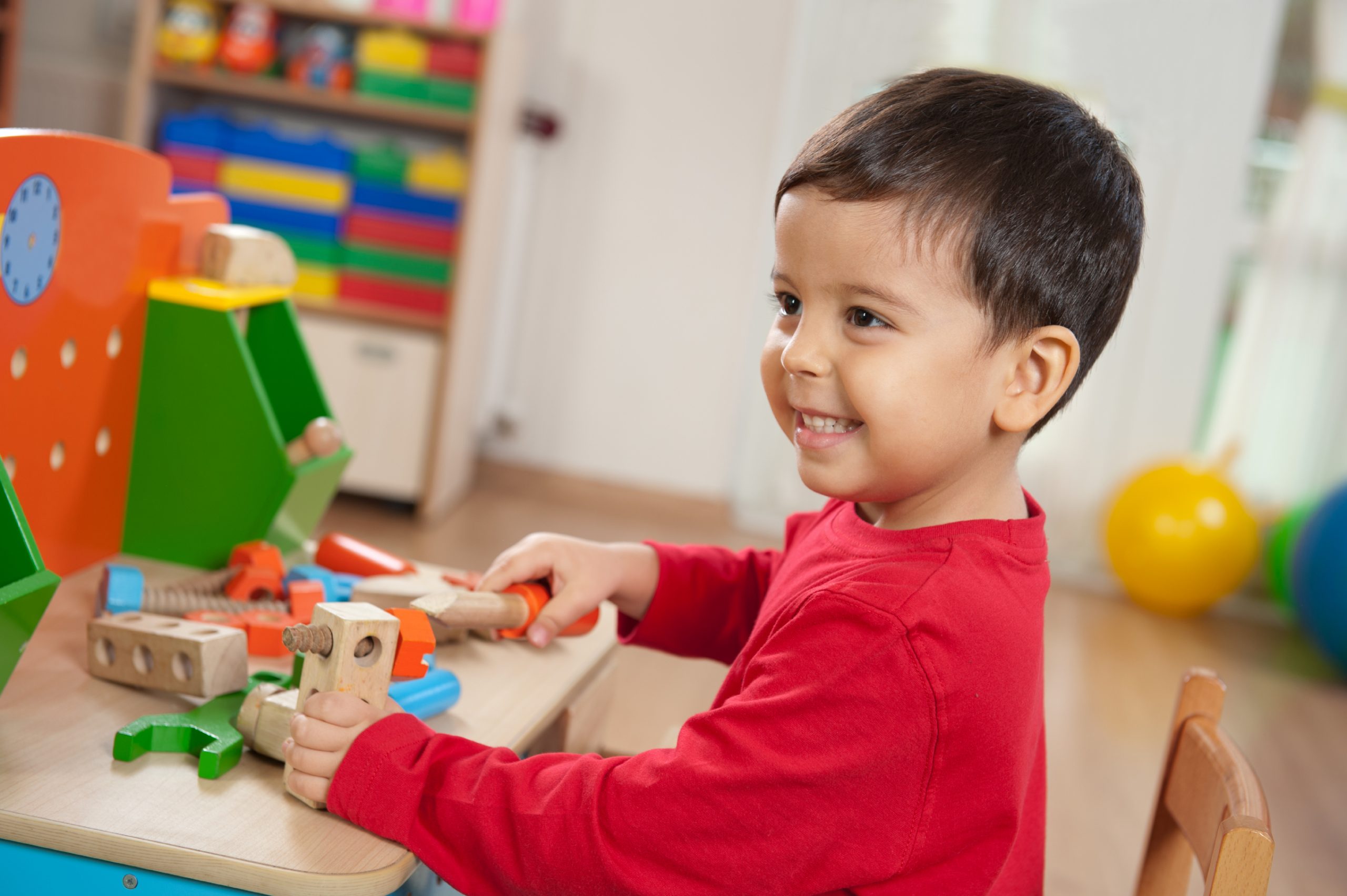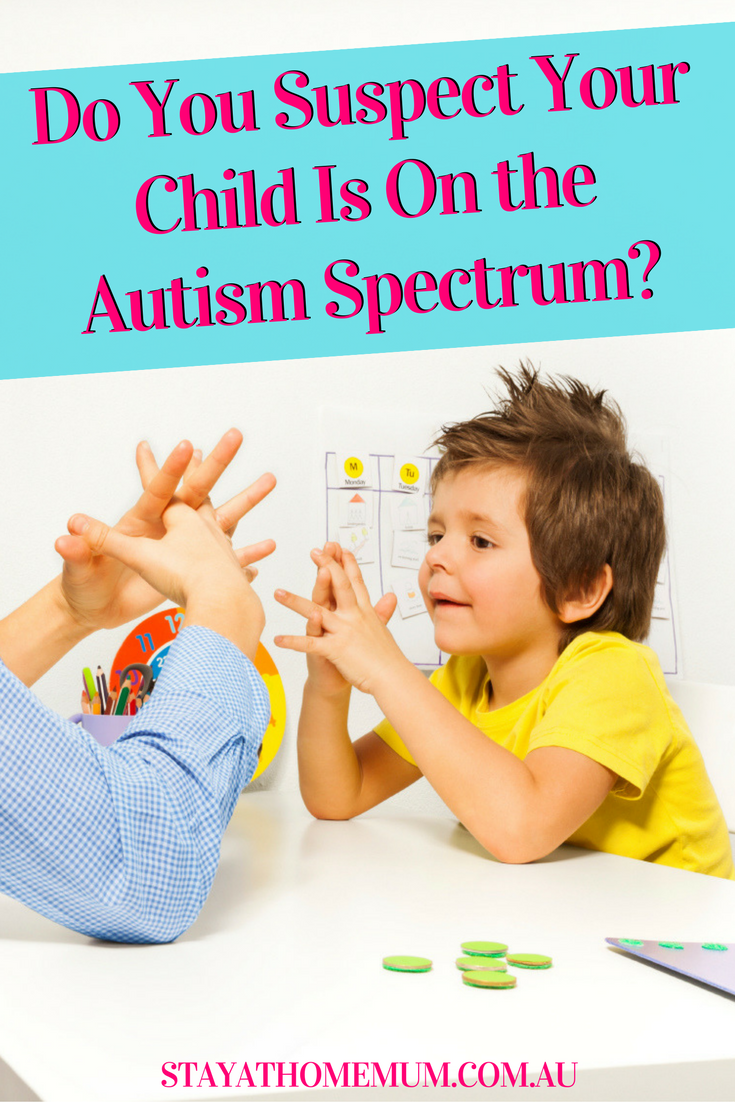Behaviors That Reveal A Child May Have Autism
Autism is a severe neurodevelopmental disorder that is characterized by social withdrawal, by repetitive behaviors and by some kind of focal attention in its classic form. Basically, its an inability to relate to others. Harvey V. Fineberg
Autism spectrum disorder is not as mysterious as it used to be ten or twenty years ago. Now, we have a better understand of the spectrum, and with that understanding comes empathy and support. Children on the autism spectrum see and process the world differently than children who dont.
They may also have a harder time socializing and understanding social cues than other children. Without knowing what autism is, or without knowing how to stop the signs, these children can often end up with an unfair expectation put on them by both their parents, teachers and their classmates.
Like the name suggests, autism spectrum disorder exists on a spectrum of different types of behaviors, and things that a child can or may have a harder time doing that most, including auditory processing, speaking verbally and communicating. How can you know when your child might have autism?
There are some classic signs, and once you get a diagnosis you can help your child better interact with the world in a way thats safe and comfortable for them.
Signs Your Child Might Have Autism
Does my child have autism?
If youre asking this question, chances are you already have some serious concerns and that alone is enough to make most parents feel scared, bewildered, and alone.
But the fact is, many parents find themselves looking for signs of a possible problem and asking this question simply out of an abundance of caution. Thats just good parenting and its only natural with the amount of attention autism has received in recent years. The good news is, most of the time concerned parents discover that everything is absolutely fine. Noticing a single red flag or even identifying a combination of concerns often amounts to nothing more than a childs individuality expressing itself as some slight variation in normal developmental progress.
And on the other side of the coin, even if there is reason to believe your child may fall somewhere on the spectrum, the news is still good: You are not alone Your child will go to school just like the other kids and learn in a regular classroom You will get the help you need and your insurance will cover most of the expense Breathe everything is going to be all right.
Before you start arriving at any conclusions at all, its important that youre very clear about one thing: You may be able to identify some traits that indicate the possibility of autism, but only a medical professional is in a position to say for sure.
- Difficulty with social interactions
Lack Of Joint Attention Skills
Joint attention skills are the skills we use when we attend to something with another person. People use joint attention skills when they share a game together, look at a puzzle together, or otherwise think and work in a pair or group.
People with autism often have impaired joint attention skills. While these skills can be taught, they may never develop on their own.
Also Check: Do Autistic Toddlers Dance To Music
Prenatal Factors That May Contribute To Autism
Taking antidepressants during pregnancy, especially in the first 3 months.
Nutritional deficiencies early in pregnancy, particularly not getting enough folic acid.
The age of the mother and father
Complications at or shortly after birth, including very low birth weight and neonatal anemia
Maternal infections during pregnancy.
Exposure to chemical pollutants, such as metals and pesticides, while pregnant.
More research on these prenatal risk factors is needed, but if youre pregnant or trying to conceive, it cant hurt to take steps now to reduce your babys risk of autism.
Reducing the risk of autism: Tips for expectant mothers
Take a multivitamin. Taking 400 micrograms of folic acid daily helps prevent birth defects such as spina bifida. Its not clear whether this will also help reduce risk of autism, but taking the vitamins cant hurt.
Ask about SSRIs. Women who are taking an SSRI should talk with a clinician about all the risks and benefits of these drugs. Untreated depression in a mother can also affect her childs well-being later on, so this is not a simple decision to make.
Practice prenatal care. Eating nutritious food, trying to avoid infections, and seeing a clinician for regular check-ups can increase the chances of giving birth to a healthy child.
Source: Harvard Health Publications
What’s It Like To Have Autism Spectrum Disorder

A kid with autism might have trouble:
- talking and learning the meaning of words
- making friends or fitting in
- dealing with changes
- dealing with loud noises, bright lights, or crowds
Kids also might move in an unusual way or do the same thing over and over .
A kid with autism may have a little trouble with these things, or a lot. Some kids need only a little bit of help, and others might need a lot of help with learning and doing everyday stuff.
You May Like: Does Jerry Seinfeld Have Autism
What Should You Know
Autism spectrum disorder is a group of developmental disabilities that can cause significant social, communication and behavioral challenges. CDC estimates that an average of 1 in 54 children in the U.S. has ASD or autism. Lets learn more
Follow the 8 steps below for your Web Quest.
Step 1: See what you think about kids with autism. Take the Fact Checkup!
Step 2: Think about some questions to ask. Lets see
Step 3: Check out some quick facts.
Step 4: Check out some great websites to help you learn more.
Step 5: Find out about people who have been diagnosed with autism to help with your Quest.
Step 6: Learn about movies and books that can give you information.
Step 7: Check out your school and neighborhood.
Step 8: Now see if your attitudes have changed. Take the Fact Checkup again.
You Are About To Be Around A Person With Autism Or Are Living With Someone With Asd
If you are in day to day contact with a person with autism, you have been given a divine responsibility. Each of us has something to contribute either good or bad to an autistic person. There are some things you should and should not do when around a person with ASD. Here are 5 doâs and donâts on how to behave around a person with autism.
5 Things you should do around a person with autism.
Read Also: Alex And Ani Autism Speaks
Information We Collect From You
Signs And Symptoms Of Autism In Babies And Toddlers
If autism is caught in infancy, treatment can take full advantage of the young brains remarkable plasticity. Although autism is hard to diagnose before 24 months, symptoms often surface between 12 and 18 months. If signs are detected by 18 months of age, intensive treatment may help to rewire the brain and reverse the symptoms.
The earliest signs of autism involve the absence of typical behaviorsnot the presence of atypical onesso they can be tough to spot. In some cases, the earliest symptoms of autism are even misinterpreted as signs of a good baby, since the infant may seem quiet, independent, and undemanding. However, you can catch warning signs early if you know what to look for.
Some autistic infants dont respond to cuddling, reach out to be picked up, or look at their mothers when being fed.
Read Also: Pecs Visual Schedules
What If Your Child Shows Some Early Signs Of Autism
Any one of these signs may not be a problem. But in combination, they may signal a need to conduct a screening or diagnostic evaluation.
As a general guide, if your child shows any 4 of these early signs, use our free online Social Communication CheckUp to screen your baby for autism.
If your child shows 8 or more of these early signs, ask for a referral for a diagnostic evaluation.
Talk to your childs doctor or teacher about any of these early signs or contact your local early intervention program. Share this article with them.
How Common Is Autism Spectrum Disorder
Based on most recent CDC report, ASD is estimated to affect about 1 in 54 children, with boys being more likely to have ASD than girls. There were more than 5 million adults in the US, or 2.21% of the population, with ASD as of 2017. Government statistics suggest that the prevalence of ASD has risen 10% to 17% in recent years.
Also Check: What Is The Life Expectancy Of People With Autism
Early Signs Of Autism In Babies Aged 0
Shortly after they are born, babies begin to smile and coo at people around them. By the time they turn 2 months old, they are able to pay attention to faces.
If the child has autism spectrum disorder, this may not be the case. If a child doesnt smile, or smile as big, and is not showing any warm expression, it may be a sign of autism spectrum disorder.
The following signs can also be seen by the time the baby turns 3 months old:
- Doesnt respond to loud noises,
- Doesnt grasp objects,
- Doesnt follow objects with their eyes,
- Doesnt babble,
- Doesnt point to things,
- Doesnt respond to their names,
- Cant stand when supported,
- Doesnt babble
How To Teach Autistic Children

This article was co-authored by Laura Marusinec, MD. Dr. Marusinec is a board certified Pediatrician at the Children’s Hospital of Wisconsin, where she is on the Clinical Practice Council. She received her M.D. from the Medical College of Wisconsin School of Medicine in 1995 and completed her residency at the Medical College of Wisconsin in Pediatrics in 1998. She is a member of the American Medical Writers Association and the Society for Pediatric Urgent Care.There are 19 references cited in this article, which can be found at the bottom of the page.wikiHow marks an article as reader-approved once it receives enough positive feedback. This article received 18 testimonials and 92% of readers who voted found it helpful, earning it our reader-approved status. This article has been viewed 259,730 times.
Autism Spectrum Disorder is a complex and multi-layered neurological variation that manifests differently from person to person. This creates a challenge when determining how to teach autistic children. Although each child is an individual who responds to teaching methods differently, there are a few strategies that are generally applied to help autistic children succeed in educational goals. These strategies build on the characteristics of autism, including differences in communication, social skills, behavior, and sensory issues.
Read Also: Is Dr Shaun Murphy Really Autistic
What Are The Signs Of Autism Spectrum Disorder
Signs of ASD range from mild to severely disabling, and every person is different. The following signs are considered to be red flags that indicate your young child may be at risk for autism. If your child shows any of the following signs, please get in touch with your childs healthcare provider to discuss a referral for an autism evaluation.
The signs include the following:
- Your child doesnt respond to their name being called at all or responds inconsistently.
- Your child doesnt smile widely or make warm, joyful expressions by the age of 6 months.
- Your child doesnt engage in smiling, making sounds and making faces with you or other people by the age of 9 months.
- Your child doesnt babble by 12 months.
- No back-and-forth gestures such as showing, pointing, reaching or waving by 12 months.
- No words by 16 months.
- No meaningful, two-word phrases by 24 months.
- Any loss of speech, babbling or social skills at any age.
Common Signs Of Autism Spectrum Disorder:
- Difficulty socializing with others, responding to social cues, and understanding feelings
- Difficulty communicating, including speaking and understanding
- Unusual reactions to the way things sound, smell, taste, look, or feel
- Avoiding or resisting physical contact
- Discomfort when regular routines are disrupted
- Repetitive physical behaviors
“It’s important for parents to help their child understand there are children who are different than they are. Parents can teach their child some simple tools and tips for communicating with children with autism,” says McQuivey.
Don’t Miss: Is James Holzhauer Autistic
Understanding Common Autistic Behaviors
We usually discipline children because they consciously act in inappropriate ways, whether its swiping treats off a siblings plate or intentionally tripping a child on the soccer field. However, a child with autism may not be able to control certain behaviors, and its important that they are not harshly punished for them. Some behaviors that children with autism may struggle to control include:
- Biting their hands and fingers
- Hand flapping or rocking
- Hurting themselves by banging or hitting their heads
- Not looking at people or making eye contact
- Physical aggression toward peers and grown-ups, like biting or kicking
Many of these behaviors stem from childrens struggles to express their needs or desires or understand social norms and cues. You shouldnt place your child in time-out, shame them, or spank them because of these behaviors. Rather, its important you work to better understand why they are acting out in this way and, if necessary, try to avoid those triggers in the future.
Read Also: Can A Child Outgrow Autism
Signs Of Nonverbal Communication Difficulties
- Avoids eye contact.
- Uses facial expressions that dont match what they are saying
- Doesnt pick up on other peoples facial expressions, tone of voice, and gestures.
- Makes very few gestures . May come across as cold or robot-like.
- Reacts unusually to sights, smells, textures, and sounds. May be especially sensitive to loud noises. Can also be unresponsive to people entering/leaving, as well as efforts by others to attract the childs attention.
- Atypical posture, clumsiness, or eccentric ways of moving .
Children with autism spectrum disorder have trouble picking up on subtle nonverbal cues and using body language. This makes the give-and-take of social interaction very difficult.
You May Like: Life Expectancy For Autism
How Do I Handle A Child With Autism In My Classroom With No Help
Teaching a large class of children is challenging no matter what the class composition is. Increasingly, teachers are being asked to deal with larger populations of students with special needs, students who are language learners, as well as grade-level learners all in one class. This task is incredibly difficult and requires concerted effort at differentiation and the key tool of all teachers: amazing patience.
This is especially true if a teacher has a child with autism in her class. Children with autism are capable of learning and participating in class, but frequently have difficulties with social aspects of learning and classwork, as well as the organization that comes with being a successful student. Additionally, children with autism may be oversensitive to physical stimuli or may have emotional triggers that cause him or her to act out in the classroom. This presents a dilemma for the teacher who needs to manage the behavior and learning of over twenty students and cant fully stop class to deal with the needs of any one.
Interesting Questions:
What To Do When An Autistic Child Has A Tantrum
Now that you understand the fundamental differences between temper tantrums and meltdowns, youll recognize that the strategies to address tantrums are rooted more in behavioral supports and skill-building.
There are a number of parent-friendly resources that target tantrum management strategies and the majority of them focus on a three-fold approach/
Also Check: Is Stuttering A Sign Of Autism
Strong Interest In Unusual Sensory Experiences
Babies with autism can show very strong interest in unusual sensory experiences, such as excessive rubbing of certain textures, looking out the side of their eye or closely inspecting a block or toy train as it rolls by, or licking objects.
If your child shows strong interest in unusual sensory experiences, this may be an early sign of autism.
Develops Rituals And May Get Upset Over Change

Babies learn morning and nighttime routines with your help. Making activities predictable can provide opportunities for learning.
Babies usually flow with changes in routines such as ending an activity early or adding a new step.
Children with autism may develop rituals and be unwilling to complete a series of behaviors a different way.
If your child insists on certain things being the same and gets very upset over unexpected change, this may be an early sign of autism.
Read Also: Are Stuttering And Autism Related
You May Like: Does Autism Come From The Mother Or Father